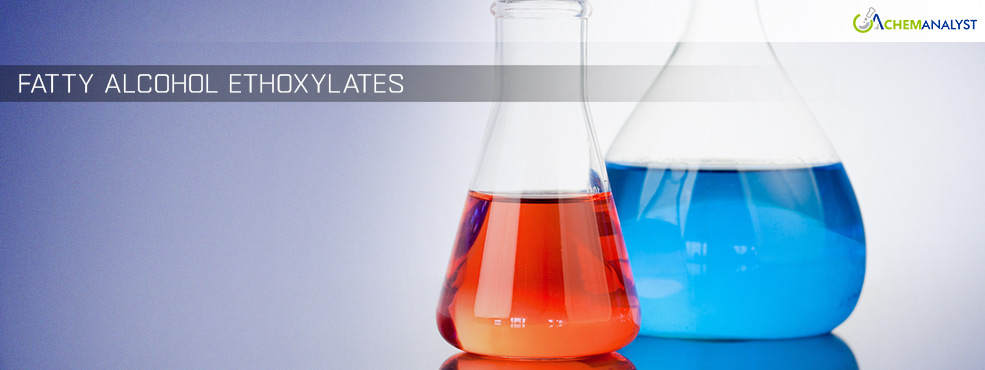Early October Scenario: High Input Cost Affects Fatty Alcohol Ethoxylates Prices in Asia
- 18-Oct-2024 7:30 PM
- Journalist: Bob Duffler
Prices for Fatty Alcohol Ethoxylates (FAE) in the Asia-Pacific Region have experienced a significant increase in the early October 2024, primarily driven by the surge in palm oil prices. This rise in palm oil costs has directly impacted the production costs of FAE, leading to its higher prices.
Despite a slight decrease in crude palm oil (CPO) production, Malaysia's CPO exports increased in September. In terms of numbers, Malaysia's crude palm oil output fell 3.8%, but exports rose 9.3%, from 1.53 million tonnes in August to 1.54 million tonnes in September. Crude palm oil stockpiles rose by 10.91%, from 953,145 tonnes in August to 1.06 million tonnes in September. Palm oil stocks rose by 6.93 percent, from 1.88 million tonnes in August to 2.01 million tonnes in September. Oleochemical exports, comprising FAE declined 5.72% in September, while palm kernel oil exports increased 45.06% to 126,446 tons.
Indonesia increased the CPO reference price for October from USD 839.53 per ton to USD 893.64. This step has further influenced production costs for FAE manufacturers, potentially impacting their pricing strategies and market dynamics.
According to the Malaysian Palm Oil Board, Malaysian palm oil output increased by 8.7% to 1.15 million tons between January and September of this year, while exports increased by 12.9% to 1.41 million tonnes. The growth in exports outpaced production by 260,000 tons in the first nine months of 2024, resulting in a year-over-year decline in palm oil inventory, which stood at 2.01 million tons as of September 2024. This shows that the worldwide supply of palm oil is tightening, which could raise the price of FAE.
Key factors influencing FAE prices included India's palm oil inventory levels, Indonesia's B40 biodiesel policy, and global production and consumption trends of major vegetable oils including palm oil.
India's strong demand for palm oil, driven by domestic consumption and restocking ahead of the festive season, has further supported the price increase in FAE. Lower palm oil stocks at Indian ports will lead to an increase in palm oil imports.
Higher biodiesel regulations in Indonesia, the world's largest palm oil producer, are projected to reduce palm oil supplies and, as a result, drive up FAE costs. This is due to the growing demand for palm oil to manufacture biodiesel, which will compete with other applications for the oil, such as food and cosmetics. The Indonesian government's intention to boost the biodiesel blend rate from 35% to 40% may result in a large rise in biodiesel consumption. If this occurs, it could result in a palm oil shortage, particularly if global demand for the oil remains high. As palm oil prices rise, so will FAE.
Looking ahead, Palm oil is expected to enter a new bull phase early next year, to be by strong demand from biofuel makers and healthy purchases by India and China. As the price of palm oil increases, the cost of producing FAE is also likely to increase in the Asia-Pacific region.



